Forums
- Forums
- Duggy's Reference Hangar
- USAAF / USN Library
- Vought OS2U Kingfisher
Vought OS2U Kingfisher
Post a reply
- Go to Previous topic
- Go to Next topic
- Go to Welcome
- Go to Introduce Yourself
- Go to General Discussion
- Go to Screenshots, Images and Videos
- Go to Off topic
- Go to Works in Progress
- Go to Skinning Tips / Tutorials
- Go to Skin Requests
- Go to IJAAF Library
- Go to Luftwaffe Library
- Go to RAF Library
- Go to USAAF / USN Library
- Go to Misc Library
- Go to The Ops Room
- Go to Made in Germany
- Go to Campaigns and Missions
- Go to Works in Progress
- Go to Juri's Air-Raid Shelter
- Go to Campaigns and Missions
- Go to Works in Progress
- Go to Skinpacks
- Go to External Projects Discussion
- Go to Books & Resources
-
12 years agoWed May 29 2024, 08:01pmDuggy
 Main AdminThe Vought OS2U Kingfisher was an American catapult-launched observation floatplane. It was a compact mid-wing monoplane, with a large central float and small stabilizing floats. Performance was modest, because of its light engine. The OS2U could also operate on fixed, wheeled, taildragger landing gear.
Main AdminThe Vought OS2U Kingfisher was an American catapult-launched observation floatplane. It was a compact mid-wing monoplane, with a large central float and small stabilizing floats. Performance was modest, because of its light engine. The OS2U could also operate on fixed, wheeled, taildragger landing gear.
The OS2U was the main shipboard observation aircraft used by the United States Navy during World War II, and 1,519 of the aircraft were built. It served on battleships and cruisers of the US Navy, with the United States Marine Corps in Marine Scouting Squadron THREE (VMS-3), with the United States Coast Guard at coastal air stations, at sea with the Fleet Air Arm of the Royal Navy, and with the Soviet Navy. The Royal Australian Air Force also operated a few Kingfishers from shore bases.
The Naval Aircraft Factory OS2N was the designation of the OS2U-3 aircraft built by the Naval Aircraft Factory in Philadelphia, Pennsylvania. The OS2U first flew on 1 March 1938.
In the late 1930s, Vought engineer Rex B. Beisel was tasked with designing an observation monoplane aircraft for the U.S. Navy suitable for a multitude of tasks including directing battleship fire. In replacing the standard biplane observation aircraft with a more modern monoplane design, Beisel incorporated innovations becoming the first production type to be assembled with spot-welding, a process Vought and the Naval Aircraft Factory jointly developed to create a smooth fuselage that resisted buckling and generated less drag. Beisel also introduced high-lift devices, spoilers and in a unique arrangement, deflector plate flaps and drooping ailerons located on the trailing edge of the wing were deployed to increase the camber of the wing and thus create additional lift.
For combat missions, the pilot had a .30-caliber machine gun while the radio operator/gunner manned another .30-caliber machine gun (or a pair) on a flexible ring mount. The aircraft could also carry two 100 lb bombs or two 325 lb depth charges. Additionally, the "Kingfisher", as it was designated, served as a trainer in both its seaplane and landplane configurations.
Beisel?s first prototype flew in 1938, powered by an air-cooled, 450 hp Pratt & Whitney R-985-4 Wasp radial engine.
Below XO2SU-1
The first 54 Kingfishers were delivered to the U.S. Navy beginning in August 1940 and six had been assigned to the Pearl Harbor based Battle Force before the end of the same year. Many of the following 158 OS2U-2s were attached to flight training at Naval Air Station Pensacola, Florida, but 53 were assigned to equip the newly established Inshore Patrol Squadrons, based at NAS Jacksonville, Florida. In 1942, nine more Inshore Patrol Squadrons were established, all exclusively equipped with OS2N-1s built by the Naval Aircraft Factory.
The Kingfisher was widely used as a shipboard, catapult-launched scout plane on U.S. Navy battleships, heavy cruisers and light cruisers during World War II, as well as playing a major role in support of shore bombardments and air-sea rescue. Two examples showing the plane's rescue capabilities include the recovery of World War I ace Eddie Rickenbacker and his crew from the Pacific in November 1942 and LT John A. Burns' unique use of the aircraft in April 1944 to taxi airmen rescued from the Truk Lagoon to the submarine USS Tang which was serving rescue duty near the atoll on that date. In all, LT Burns rescued 10 survivors on two trips and was awarded the Navy Cross for his efforts.
Australia received 18 Kingfishers from a batch of aircraft ordered by the Dutch East Indies that was diverted to Australia in 1942. They were initially used as training aircraft for pilots destined for flying boats, but in 1943, they were used to equip No. 107 Squadron RAAF, which carried out convoy escort duties until disbanded in October 1945. One Kingfisher was used in support of the Australian National Antarctic Research Expedition in 1947?48.
Throughout its U.S. Navy service, the OS2U and even its predecessor, the Curtiss SOC Seagull served much longer than planned, as the planned successor, the Curtiss SO3C Seamew, suffered from an insufficiently powerful engine which was a complete failure. The OS2U was only slowly replaced in the latter stages of World War II with the introduction of the Curtiss SC Seahawk, the first examples reaching the U.S. Navy in October 1944.

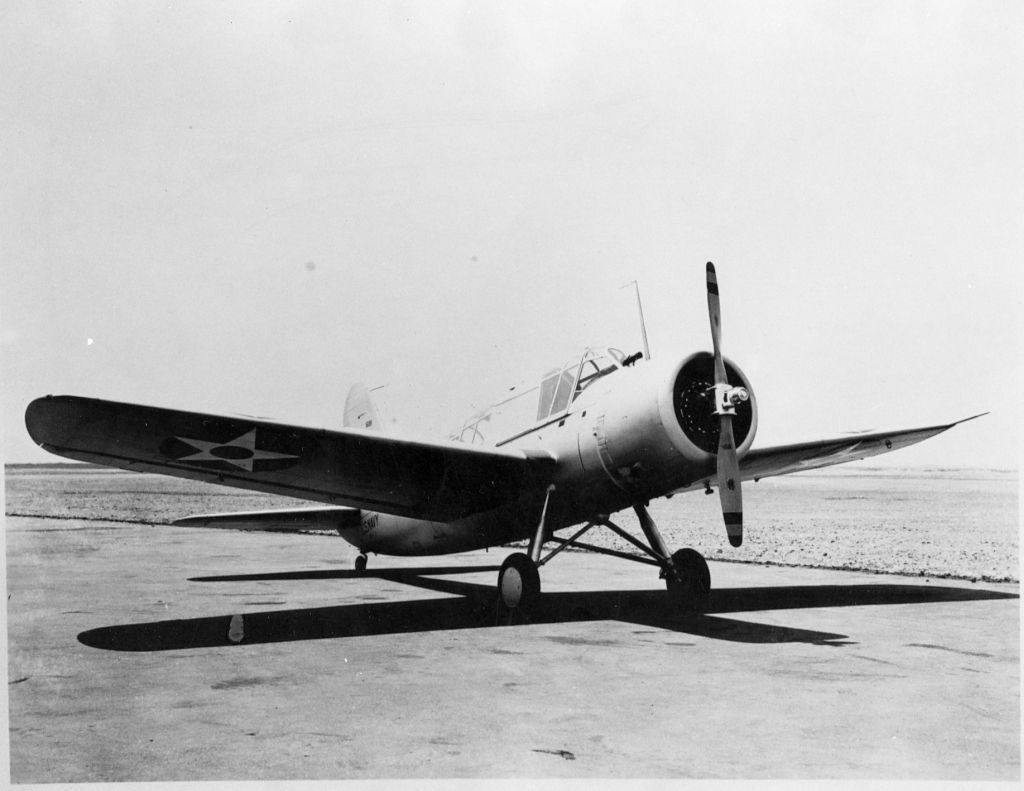












Below A series of eleven photographs showing members of the Fifth Special Naval Construction Battalion craning OS2U Kingfishers of Scouting Squadron (VS) 56 onto trucks and transporting them from Andrew Lake to Clam Lagoon at Naval Air Station (NAS) Adak in the Aleutians.




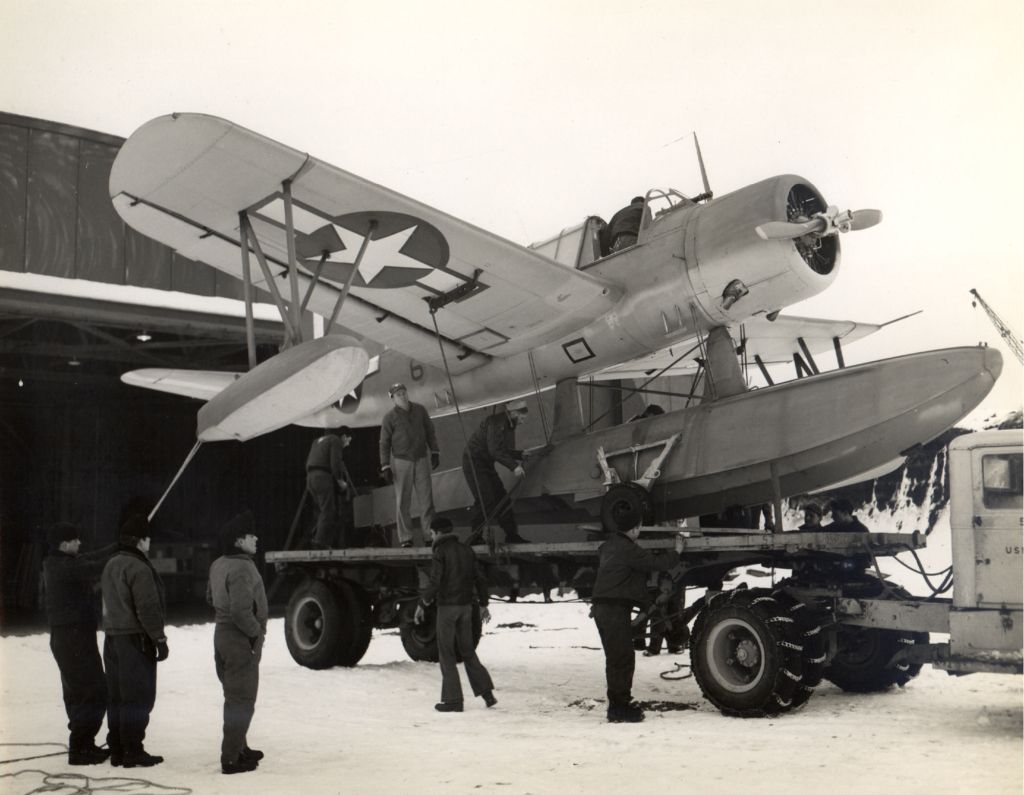

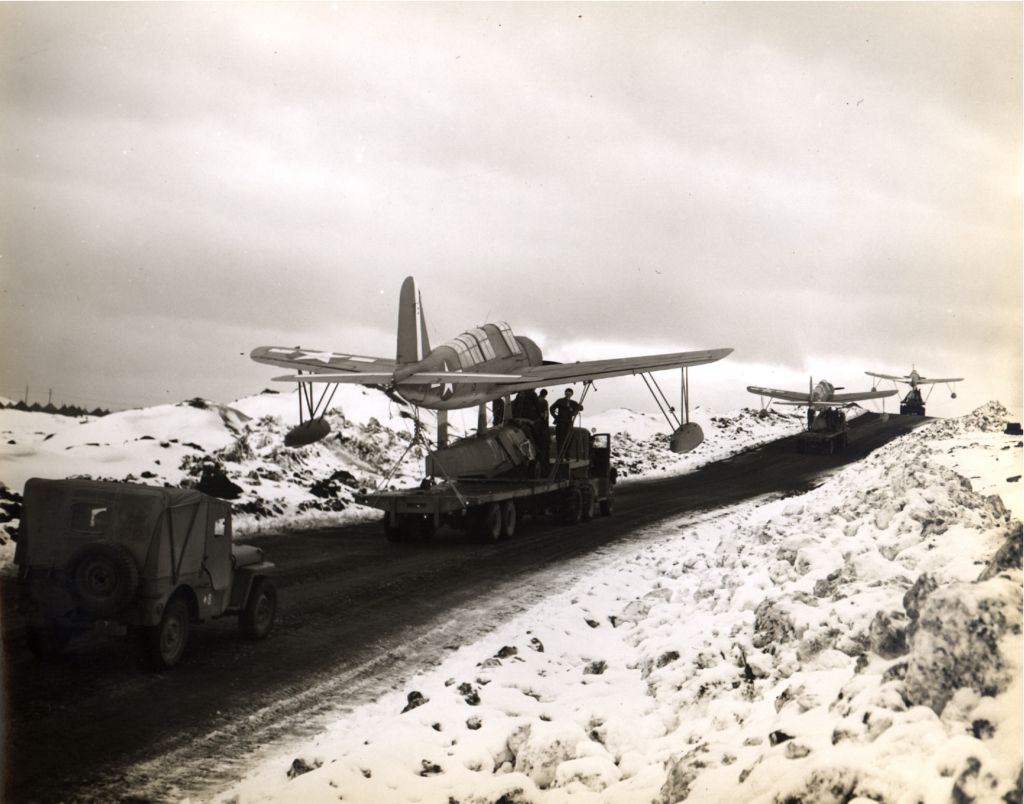
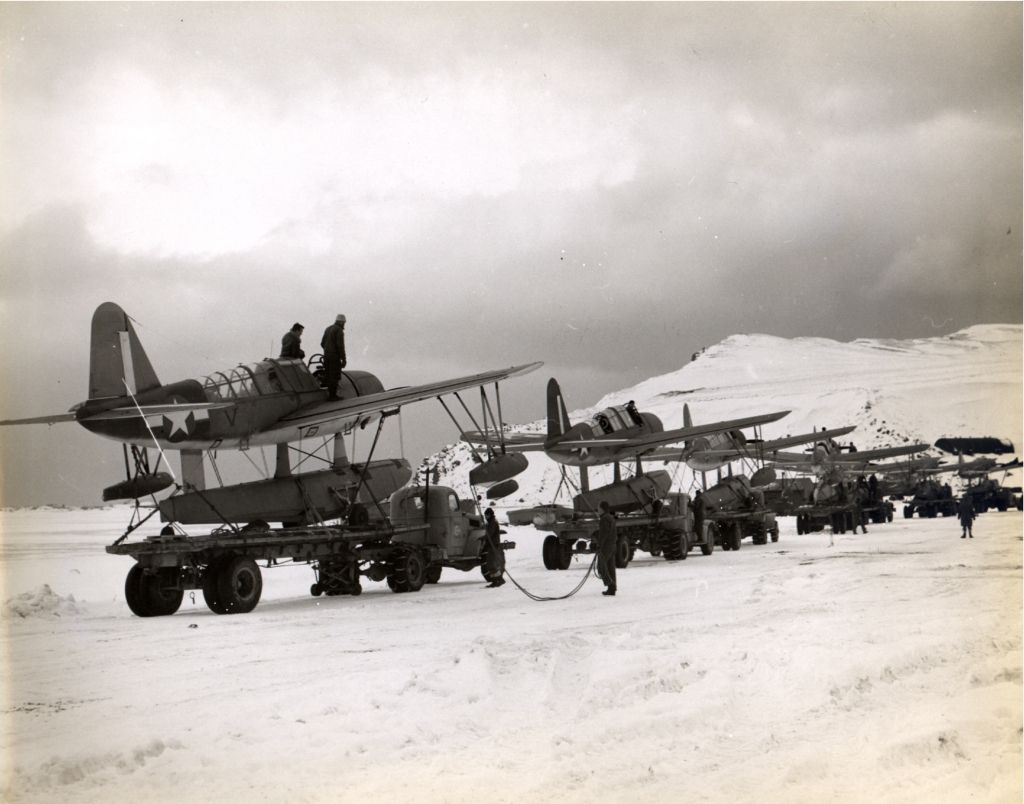


Below View of "The Bug," the OS2U Kingfisher seaplane that rescued Captain Eddie Rickenbaker and others after their airplane crash in the Pacific. This aircraft also survived the attack on Pearl Harbor.
For more information on his rescue LINK - http://www.pacificwrecks.com/aircraft/b-17/40-3089.html


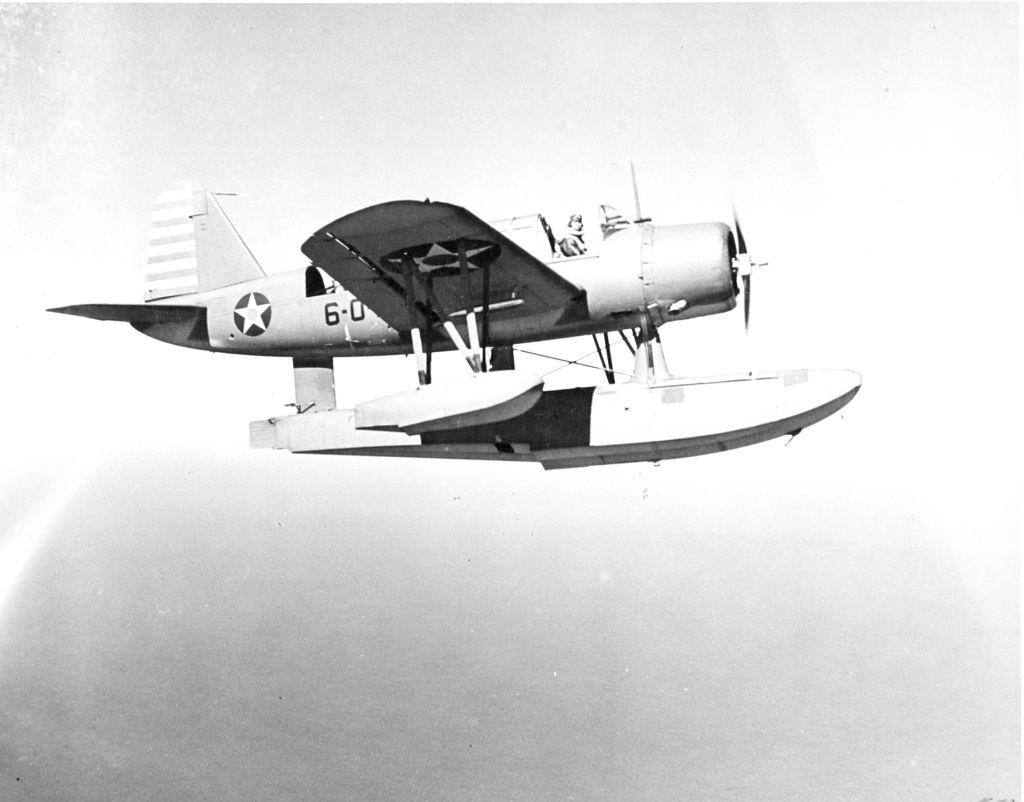






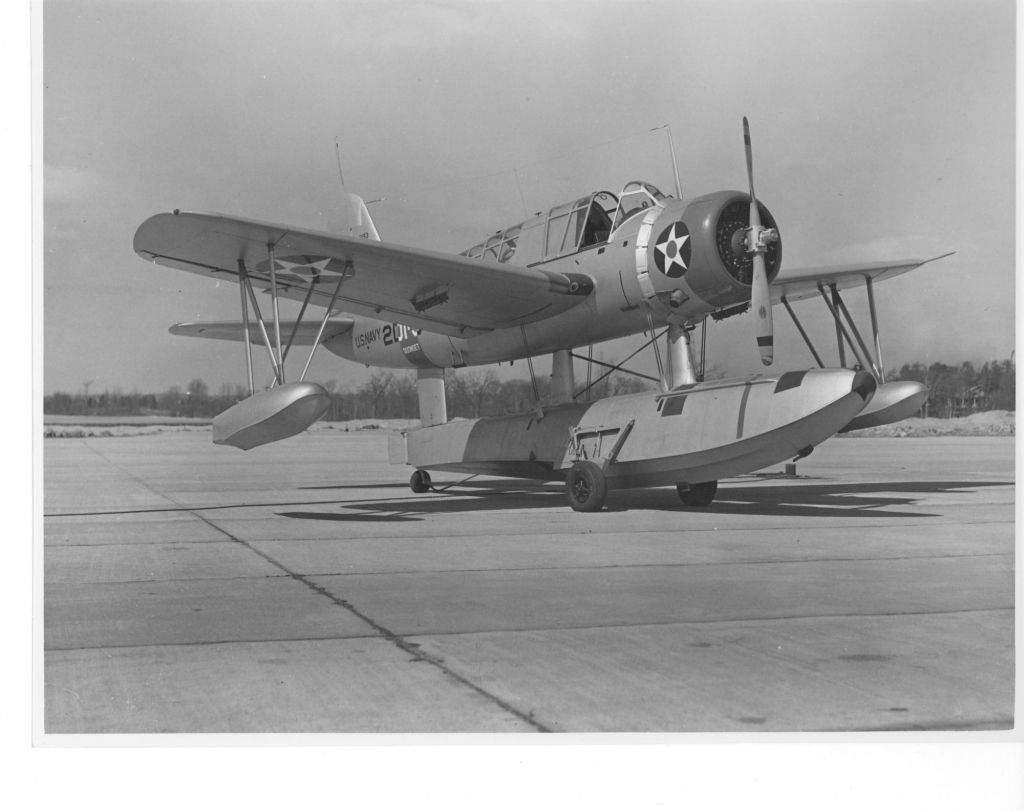



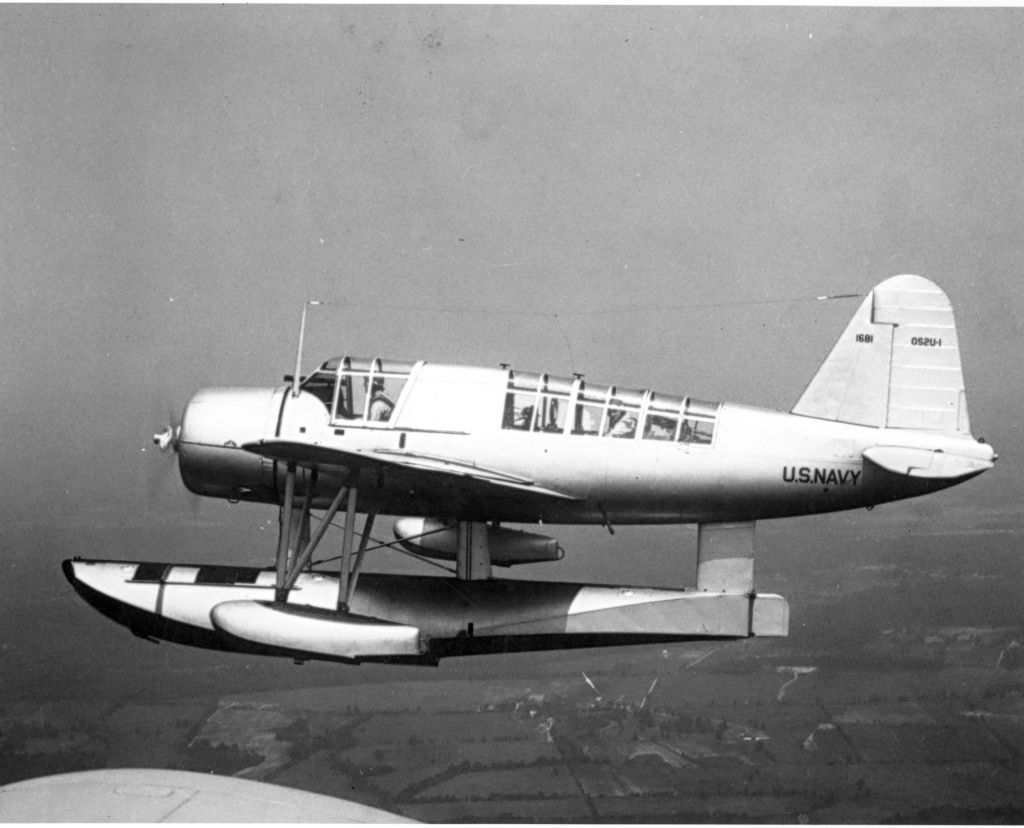


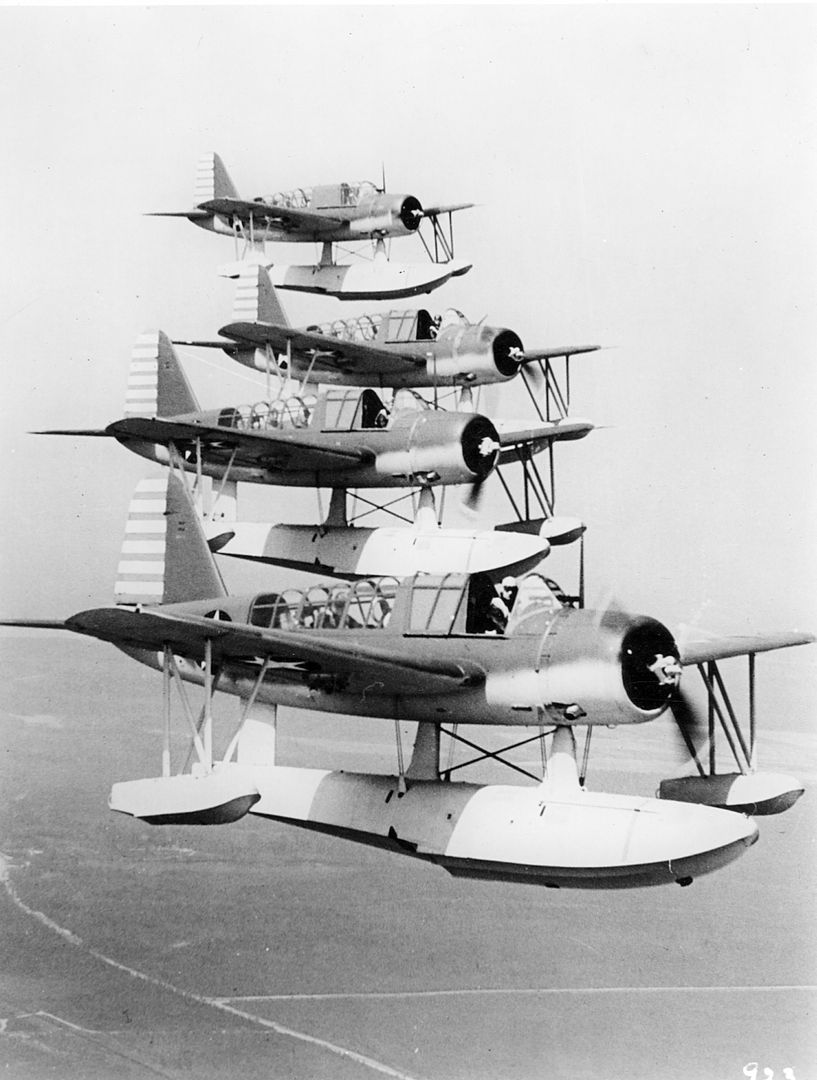








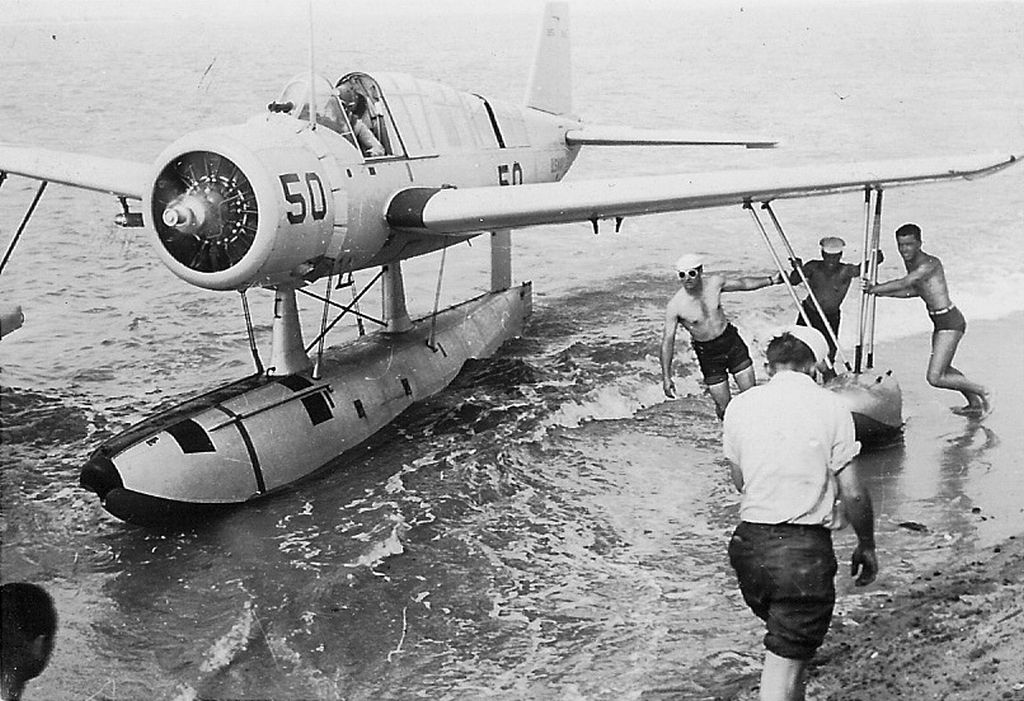









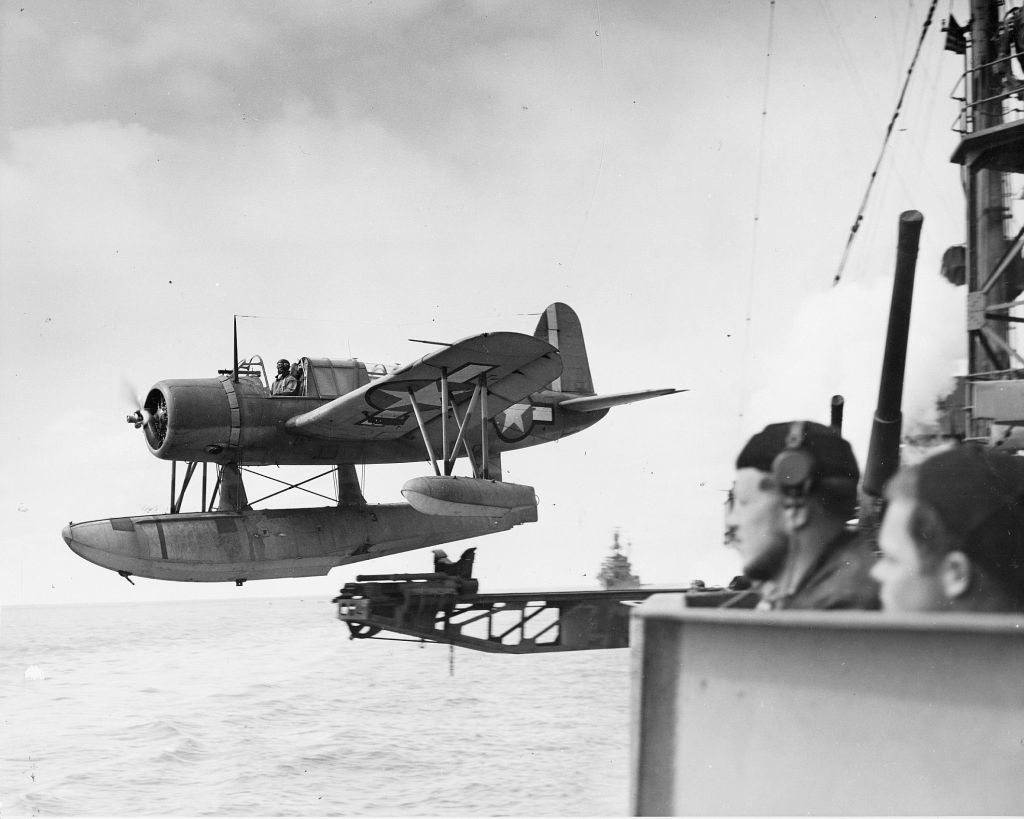









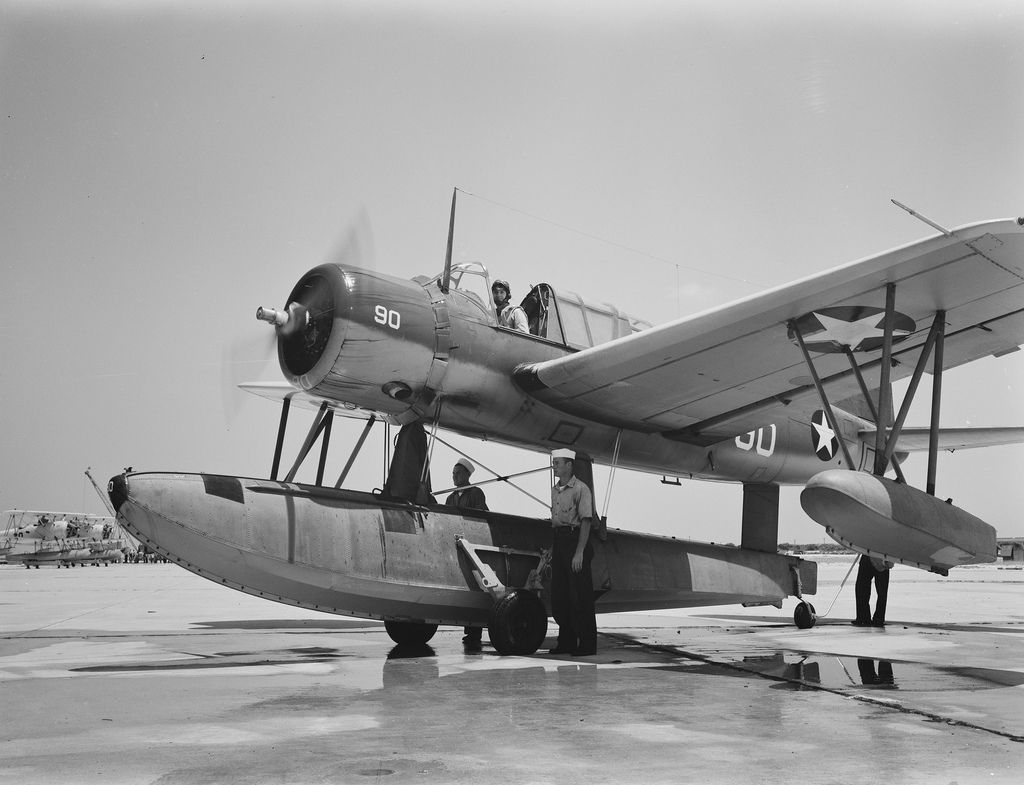







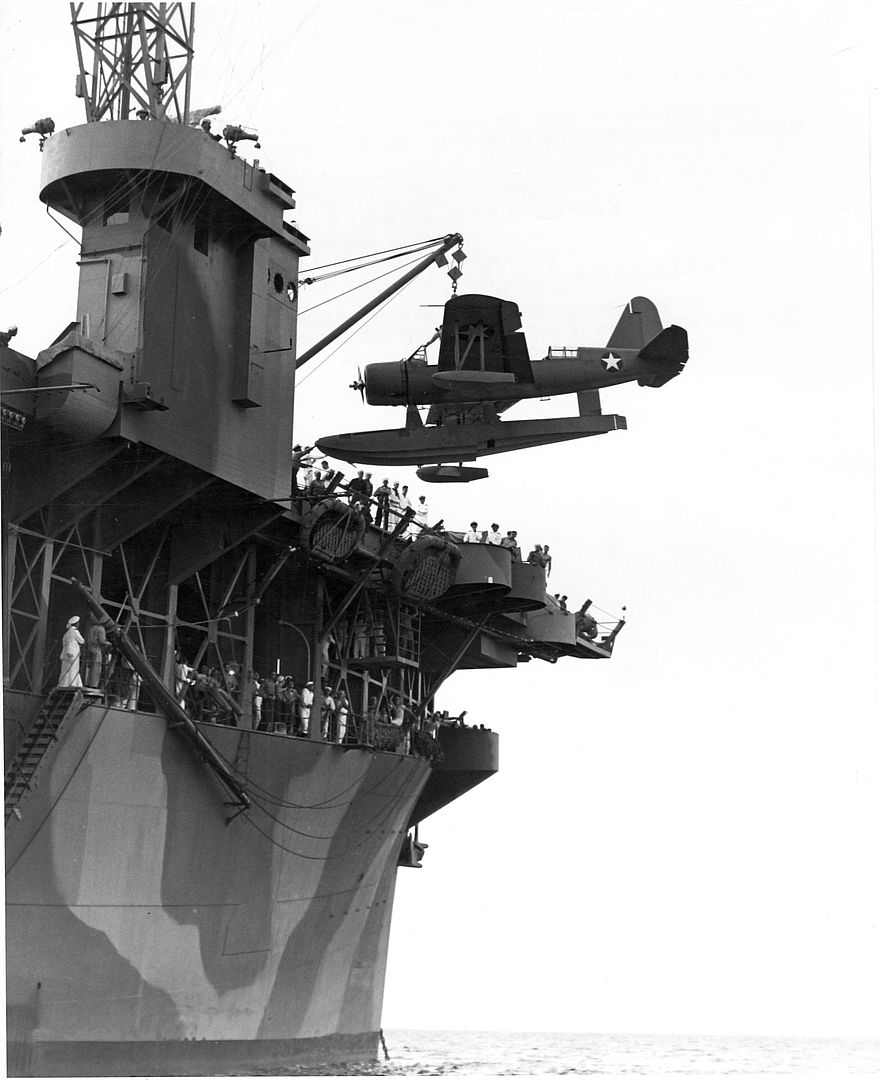









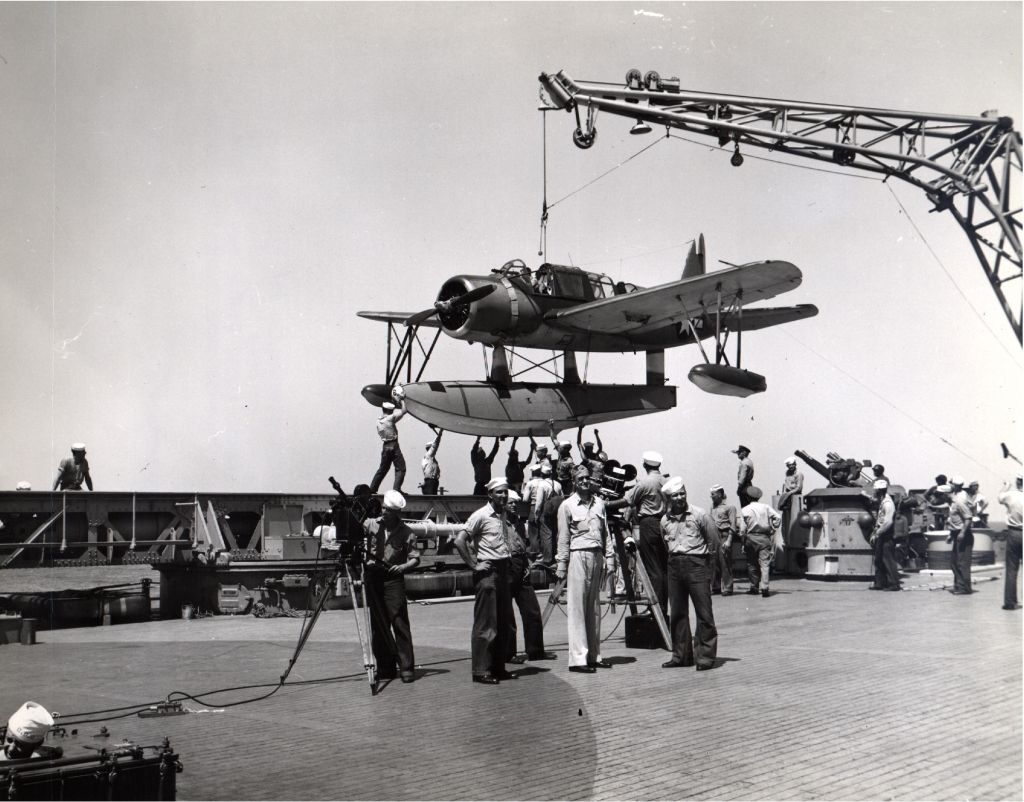


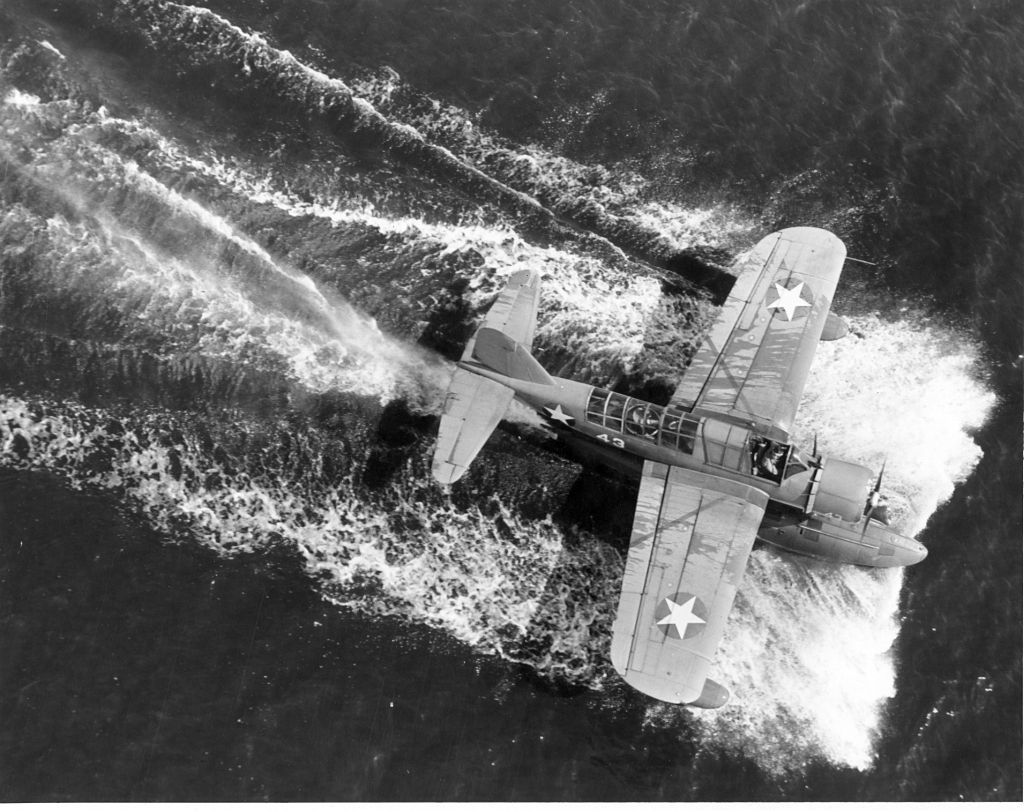















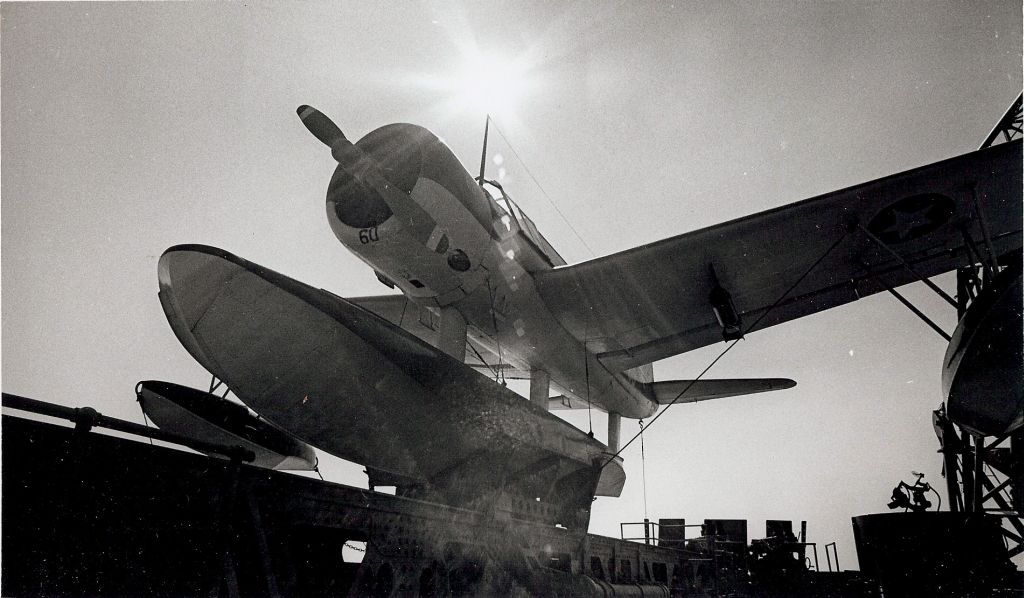



Below RAAF



Below RN
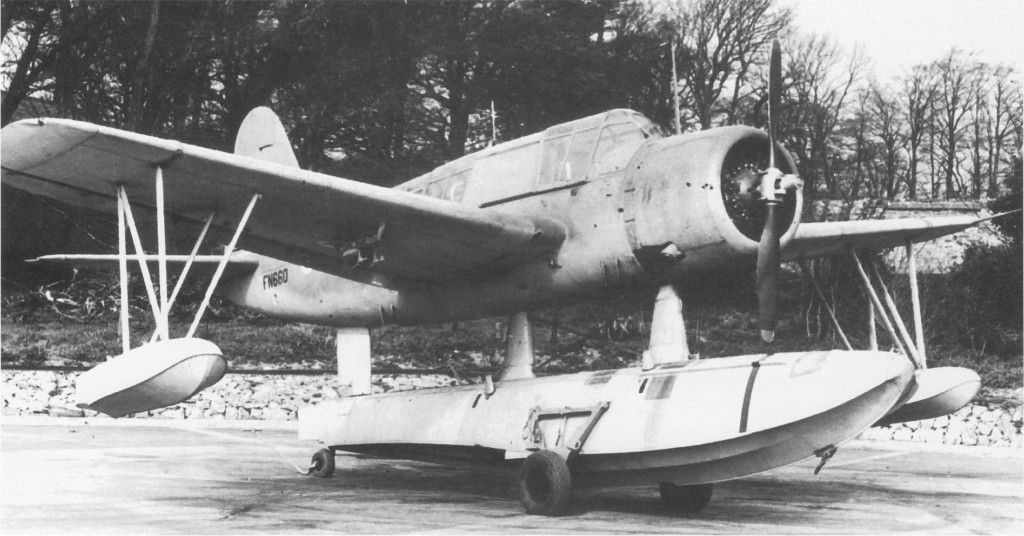



Below in colour





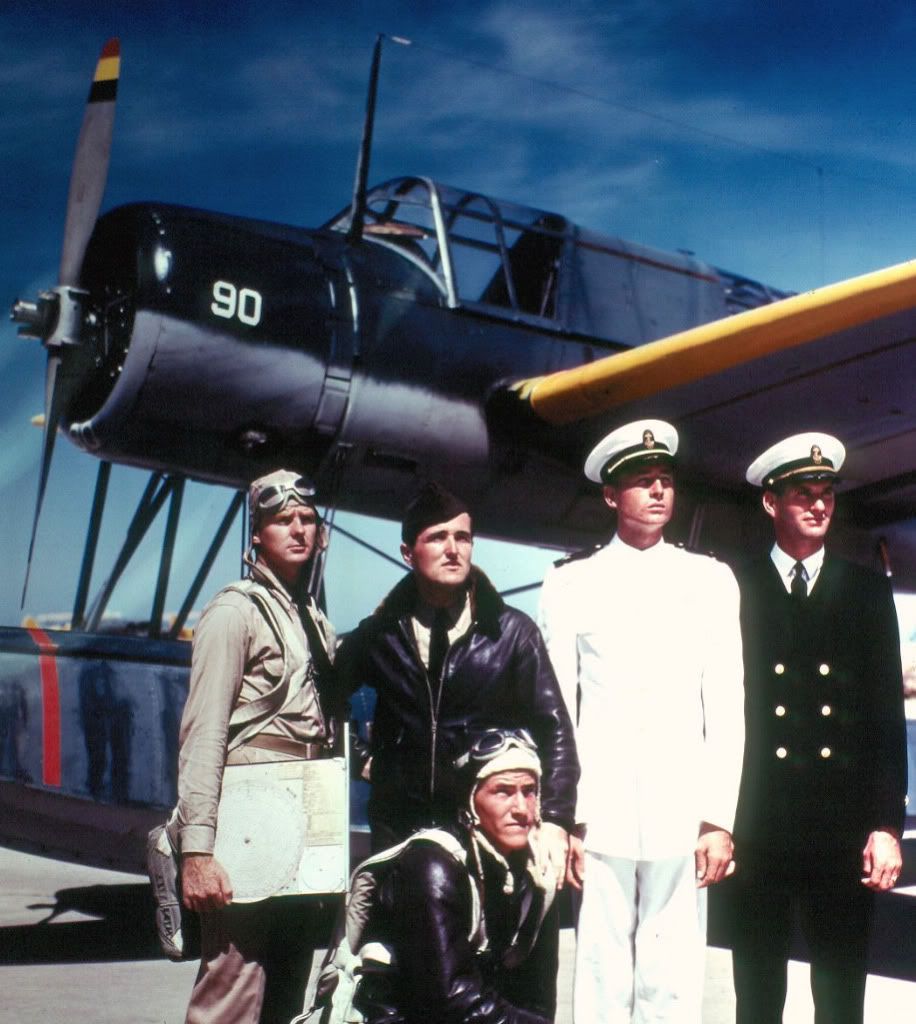
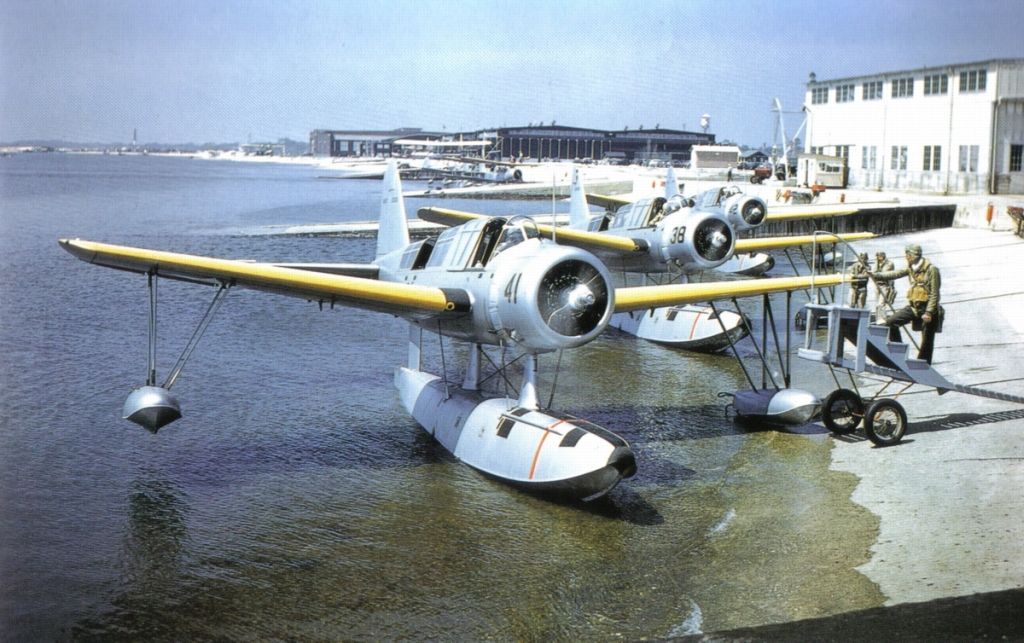



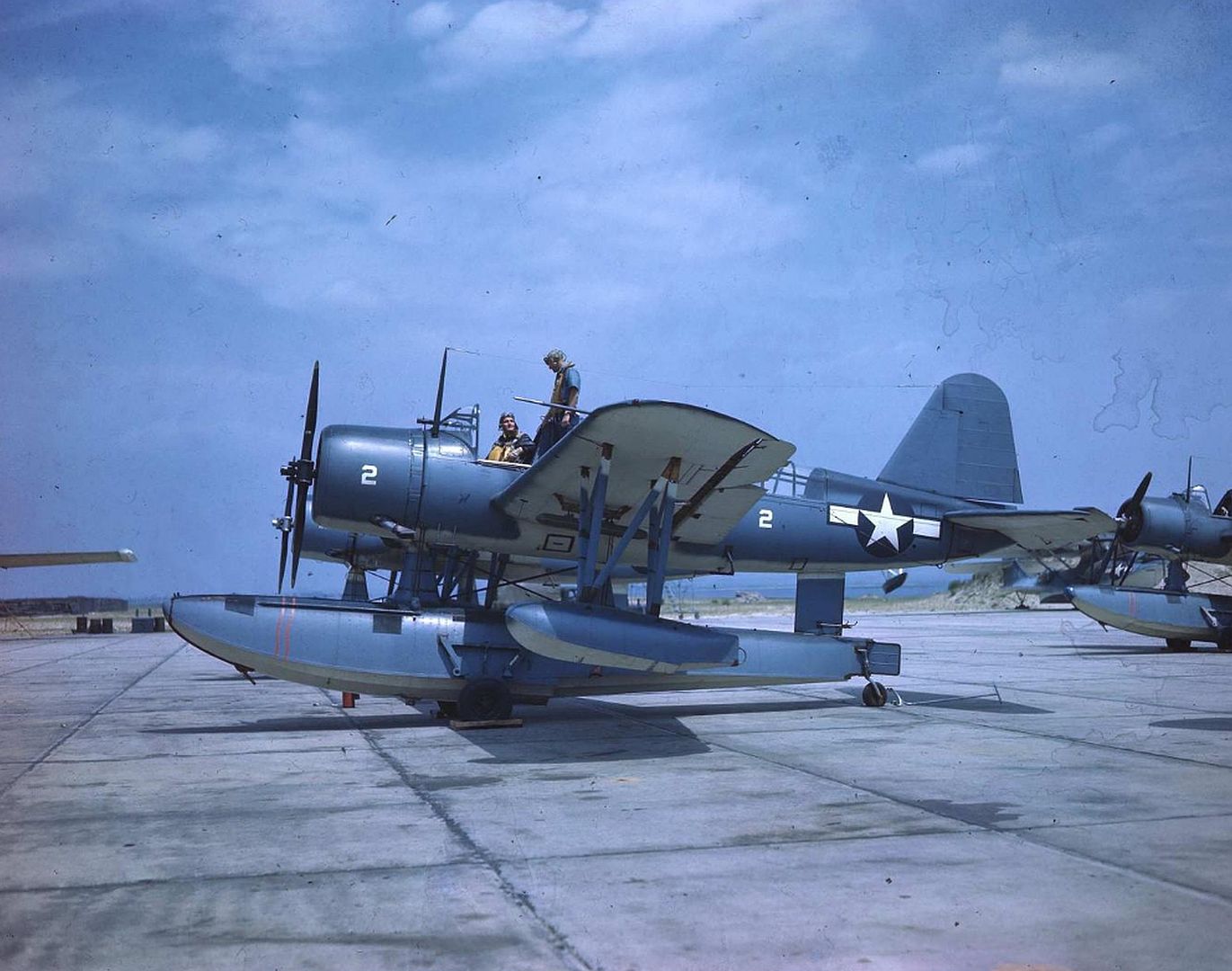






_ship_s_Commanding_Officer_shows_other_senior_officers_around_the_ship_during_her_shakedown_circa_February_-_May_1943_OS2U_Aircraft_on_its_cart..jpg?width=1920&height=1080&fit=bounds)
Floatplanes on battleships and cruisers were used during bombardments to radio range and bearing data back to their ships. OS2U's from these capital ships also found their usefulness as rescue aircraft - Kingfishers from USS North Carolina (BB-55) and USS Massachusetts (BB-59) landed in Truk lagoon 1-May-1944 to rescue downed airmen. Lieutenant (jg) John Burns gave the Kingfisher near celebrity-status on this date when he and radioman Aubrey J. Gill landed their Kingfisher under fire. After picking up 7 airmen (including another OS2U crew), Burns' plane was too heavy fly and nearly too unstable to float. After a 5 hour wait, Burns taxied to submarine USS Tang (SS-306) where all 9 were rescued. Tang then sunk the plane with machine gun fire.
USS Tang link - http://www.navsource.org/archives/08/08306.htm
SPECIFICATIONS
OS2U-3
Machinery One Pratt & Whitney R-985-AN-2 radial engine rated at 450hp
Armament 2x7.62mm M1919 Browning machine guns, 295kg of bombs
Crew 2
Span 9.99 m
Length 9.99 m
Height 4.61 m
Wing Area 24.00 m?
Weight, Empty 1,870 kg
Weight, Maximum 2,721 kg
Speed, Maximum 264 km/h
Service Ceiling 3,960 m
Range, Normal 1,296 km
As usual right click.
Regards Duggy
-
12 years agoSat May 04 2013, 03:56pm
 Level 7Top quality article again. Thanks for sharing
Level 7Top quality article again. Thanks for sharing
Post a reply
- Go to Previous topic
- Go to Next topic
- Go to Welcome
- Go to Introduce Yourself
- Go to General Discussion
- Go to Screenshots, Images and Videos
- Go to Off topic
- Go to Works in Progress
- Go to Skinning Tips / Tutorials
- Go to Skin Requests
- Go to IJAAF Library
- Go to Luftwaffe Library
- Go to RAF Library
- Go to USAAF / USN Library
- Go to Misc Library
- Go to The Ops Room
- Go to Made in Germany
- Go to Campaigns and Missions
- Go to Works in Progress
- Go to Juri's Air-Raid Shelter
- Go to Campaigns and Missions
- Go to Works in Progress
- Go to Skinpacks
- Go to External Projects Discussion
- Go to Books & Resources
